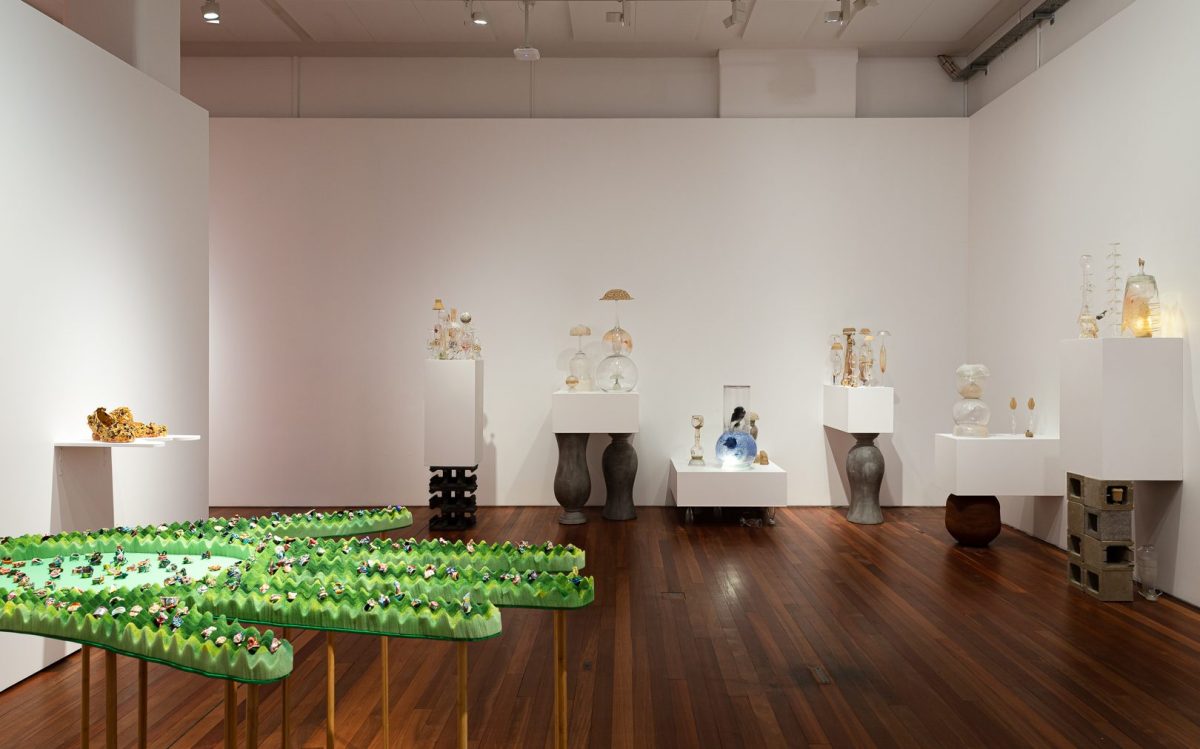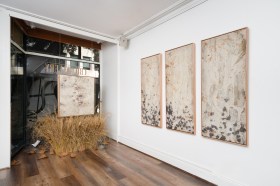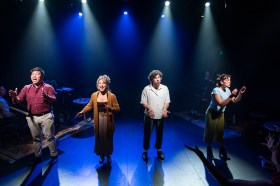Among the excitement of having your first institutional show or major performance, there can be a lot of pressure and anxiety for emerging artists at the early stages of their career. Where do you go from here and what are the next steps? How do you strategise your time and energy, as well as take care of your mental health?
ArtsHub spoke with three artists in different phases of their careers to offer you insights into the necessary considerations of transitioning from early to mid-career.
What has been a turning point in your career?
Perth-based Daisy Sanders is a multidisciplinary dance artist and current mentee of the 2022 STRUT Dance Mentorship program with Lucy Geurin. Sanders told ArtsHub about the path that led to where she is today.
‘A really big part of my career that shifted me from emerging to mid-career was actually being very sick,’ she explained, ‘I had a long recovery from chronic fatigue and so I work with the body in a way that’s very focused on energetic sustainability and healing.’
Sanders continued: ‘The gestation time from being sick and the way I listened to my body has created a very, very deep choreographic practice and now I’m in a position where I’m really ready to make work and I have more than one choreographic work really brewing at the surface.’
For Hong Kong born, Melbourne-based artist Scotty So, who creates multimedia works and elaborate drag performances, taking part in the 2020 NGV Triennial was a major career moment that accelerated his practice.
So told ArtsHub: ‘I had a chat with my supervisor at uni (who I have so much respect for and really guided me to where I am at now) when he came to see my performance and the work at the NGV.
‘He mentioned to me that I would have to continue and create works/projects that are at a similar level within two years after this huge exposure to remain seen in the art scene, so I had that as my aim after the triennial.’
Ceramics artist Emily Hunt, recent winner of the Fauvette Loureiro Memorial Scholarship for mid-career/established artist and currently based in Berlin, told ArtsHub: ‘There have been two points in my artist career when I felt very grounded and confident in my work, that was in 2014 and right now.’
She continued: ‘After a wave of initial success and attention, there was a long time where I just completely lost my confidence as an artist, although I was continually making work and exhibiting. There was financial pressure after I was represented by a gallery. There was pressure to keep up. In hindsight, my move to Berlin in 2017 was a major reset for my career, as I had to start from scratch again.’
What do you think are the expectations around being a mid-career artist?
Sanders said: ‘For me, mid-career or approaching mid-career, is the moment where I go, “Okay, I’m gonna stay.” I feel really clear that I’m in this for the long haul and I feel deeply passionate about participating in the world as an artist.
‘So then, of course, the question is how to do that sustainably and not burn out,’ she added.
‘Artistically I feel like my development is really consolidating and gaining energy and clarity. A big part of that is also having deep connections across the sector and across different disciplines in Perth.’
However, Sanders also feels that art careers are more difficult to define, especially in monetary terms.
‘The mid-career label sometimes comes to me as a bit of a shock… While I feel really connected and really inspired, my practice is quite deep and I’m ready to make work, there’s a mismatch because it’s still really difficult to increase your employment and your income.’
Hunt added: ‘An expectation I had as an emerging artist, is that I would be financially stable when I entered mid-career, which was not realistic. I know amazing mid-career artists who are not financially successful. Money is not an indication of talent.’
The fact that I have chosen to be an artist as a way of life is enough for me to continue to be one, because being an artist is a gift.
Emily Hunt
So echoed the financial woes of being an artist, adding that his artistic practice might look very different if there was monetary stability. ‘I would always say this to my younger self: buy bitcoin and invest in properties to get financially independent, so you can make any art you desire and no need to worry about sales.’
Read: 10 tips for artists to increase their productivity
It’s important to manage your time and energy to achieve career goals, what’s your strategy/approach?
Hunt told ArtsHub: ‘There is definitely pressure to say yes to everything and it is a tough lesson learning how to say no. Residencies are quite disruptive for me, I am wary of them.
‘I think I am more wary of everything in the artworld, after some negative experiences, and this approach suits me much better. I do not go blindly into opportunities anymore – I put my practice first.
‘I have stable schedule to my week, family comes first, then art-making, then socialising. I try not see people at least three days in the week, so I can focus.’ said Hunt.
Sanders said: ‘I’ve become a lot more discerning about what I’m prepared to do… I said to myself I have to minimise opportunities where I’m paying, because that keeps me as the customer and the learner.’
On asking if there’s such thing as a ‘bad’ opportunity, Sanders said it ties to establishing that sense of self worth, adding that ‘if it’s not a whole bodied “yes”, then it’s a “no”.
‘If someone offers you a position as a performer or a collaborator, to really check in with yourself, “Is this deeply in line with my values and with where I want to grow artistically?”
As someone who is approaching mid-career, you have to be more discerning, you have to really develop your sense of self worth.
Daisy Sanders
Sanders added: ‘I know about myself that I will work very hard and very rigorously when I feel safe and I trust the people I work with. When the resources are tight in the arts, which they often are, we have to be really consciously reflecting on how we can make caring ecologies, and that’s a huge part of my practice.’
Sanders added: ‘Care is an easy word to throw around, but it’s actually a very rigorous practice – it takes a lot of sensitivity and a lot of communication.’
For visual artists, this care often comes through their relationship with galleries, and So struck gold with his representation by MARS Gallery.
‘I think it’s important to have a gallery which can help with the business side as they have so much experience dealing with different parts of the art world. [MARS] have been so supportive of my career and really helped push my work to be seen by different curators and organisations,’ he said.
What has been a proud or career defining moment for you?
Hunt told ArtsHub that exhibiting at Casula Powerhouse was a dream-come-true moment. ‘When I was teenager, I would go alone to Casula Powerhouse to see the contemporary art shows. It was very mysterious place to me. It was a defining moment for me to exhibit a large installation there in 2014.’
She added: ‘The scholarship from Sydney University [Fauvette Loureiro Memorial Scholarship] represents something very significant to me, the institution still support my work. It is the defining moment after everything I have experienced in the last few years.’
Similarly, So said having his works exhibited twice at the NGV in recent years has felt like a big moment where things came back full circle. So’s photo series, China Masks (2020) which debuted at the NGV Triennial (and now in the institution’s collection) also made an appearance in their latest exhibition QUEER.
‘The Triennial was such a huge show and I was included pretty late in the selection process so it was quite a surprise as well,’ said So.
‘Originally those photos at the Triennial was shown in the context of the pandemic so many audiences didn’t realise that they were self-portraits of me in drag, so now it’s very interesting to see them in a different context which is very much the intention of my art – there are always layers of the work and by looking at them from a different perspective you can see different meanings.’
Read: Queer view mirror: new exhibition celebrates LGBTI culture
Most recently So starred in the promotional video of Melbourne’s RISING Festival, working with the likes of Silky Jazz and earning recognition from singer songwriter Kylie Ann Minogue.
Sanders said two international internships (with Geoff Sobelle in the US and artist residency with the Irish-based company Teaċ Daṁsa) not only opened her eyes to the possibilities of her practice, but grounded her commitment and sense of belonging to Perth.
‘I kind of thought I’ll go overseas and that’ll lead to more work overseas, but what actually happened was they really helped me consolidate what I wanted to do as a leader and a maker and how I want to draw people together – they’ve set me up to be really passionate about being in Perth and being a dance leader here.’
Further, it is non outcome-based funding that helped Sanders achieve this, the value of which should not be underestimated.
‘Those money pots are mind-blowingly valuable, I literally don’t think I would be moving into mid-career without them, and they’re disappearing. [It’s the] funding that gives artists time to gestate, to make connections, to focus on practices – it’s the ultimate career development and practice development opportunity. Rather than making me more self-focused, the outcome is that I have so much generosity.’
To conclude, Sanders offered a piece of advice to emerging artists currently making this journey. ‘Good work takes time. It’s very easy getting stuck in the grant cycle and the calendar year to feel like you have to progress at a certain pace and you have to prove your commitment or prove your development. I just don’t really subscribe to that.
‘I’ve got some wonderful mentors that told me that my existence as an artist is threaded through all of those things [my research, teaching and practice] – I’m not defined by whether I present work, even though that’s part of my ambition, but actually my practice is a continuum that runs underneath works,’ she said.
Hunt also offered: ‘Don’t worry so much about how long it is going to take, be patient. Your trajectory is going to be different. Receiving recognition later in life is actually better for your mental health.’





